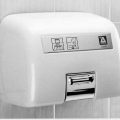There was a time when your doctor knew you personally and was just a phone call away. If you were sick, the neighborhood doctor would show up at your door with a black medical bag in hand, ready to work. But those days are over. In a world of fast-paced health care systems, medical centers, out-patient facilities, HMOs, and ER visits, you’d be hard pressed to find a doctor who makes house calls anymore. While house calls seem practically unheard of, they are, surprisingly, making a bit of a comeback.
When did House Calls Stop?
Common in the first half of the 20th century, house calls became gradually less prevalent over the past sixty years. In the 1930s, house calls accounted for about 40 percent of patient-physician interactions. By 1980, that number dwindled to just one percent, according to The New York Times.

Recently though, there has been an uptick in physician house calls. In 2010, an estimated 4,000 doctors went out on approximately two million house calls throughout the United States. House calls are generally reserved for elderly or pediatric patients who can’t readily visit a doctor’s office or ER when sick. Many physicians making these house calls attend to non-emergency situations, such as fevers, stomach pains, cuts requiring stitches, strep throat, and so on.
Benefits of House Calls
There are several advantages to house calls, not the least of which is convenience on the part of patients, who don’t have to schlep themselves to the doctor’s office when they’re feeling ill. This is especially true of elderly patients who can’t move around easily, and it reduces their chances of falling or getting sick in an office full of children coughing all over the place. Moms with plenty of small children at home also benefit, as they don’t have to drag everyone out in the cold to get one child treated. Another benefit of house calls is that physicians end up learning a lot more about their patients’ lifestyle, along with their eating and personal care habits, exercise regimens, and medication-taking practices.
Growing Trends
Another growing trend is virtual house calls, with many health care sites and physicians offering a live web cam that patients can use to interact with their doctor. Patients can log on, connect with the doctor on call, and get face-to-face advice about their symptoms. This improves communication and individualized care while allowing the physician to actually see symptoms, such as rashes and cuts, and make a better diagnosis. The emergence of the Affordable Care Act in 2012 explored the effectiveness of house calls and in which settings they would be most appropriate and necessary. Participating doctors may take a share of the savings, provided they can prove they’re offering quality care and reducing costs at the same time. Studies have found that house calls can cut down on the need for hospitalization by about 60 percent, saving 25 percent in overall costs.
Ask your doctor if he or she makes house calls the next time you’re in a bind. You may be surprised to hear a “yes” in response.
Byline
Marv Winkler writes on the medical profession, health & wellness, medical research, the history of medicine and other related topics. Those thinking about joining the medical profession should consider viewing the resources at CNACertification-Training.com.
Image credit goes to Thomson Data LLC.
































No Comments
Leave a comment Cancel